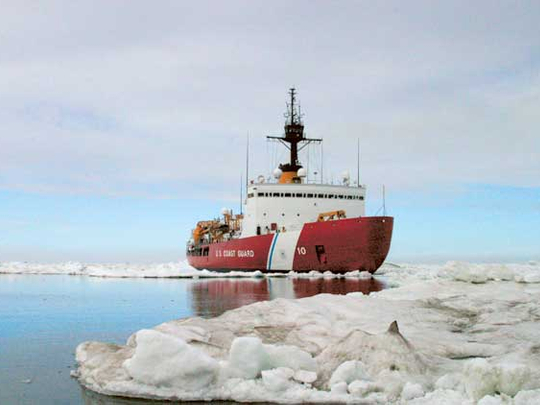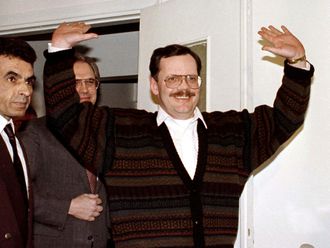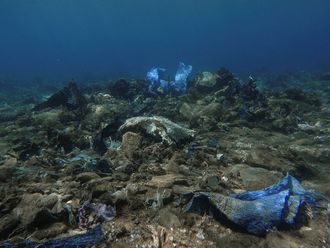
San Diego: While security has tightened at the US border, drug smugglers are increasingly turning to the high seas.
The area where boats were seized off California and the northwest coast of Mexico tripled during the 2013 fiscal year, which ended in September. Off South America, traffickers over the years have been traversing territory so big the continental United States could be dropped inside of it.
Meanwhile, budget cuts have hit one of the lead US law enforcement agencies on international waters — the Coast Guard, the only US military service able to make drug arrests hundreds of miles (kilometres) offshore. To meet automatic federal budget cuts, it reduced its operating costs by 25 per cent in 2013. It also lost help from US Navy ships on drug missions off Latin America that were decommissioned and not replaced because of cutbacks, or sent elsewhere because of Washington’s new military focus.
Only a third of suspected drug smuggling boats or aircraft out of South America that were tracked by US intelligence in cocaine-trafficking corridors in the Pacific and Caribbean were stopped last year, the Coast Guard’s top officer, Admiral Robert Papp, told The Associated Press.
“Our interdictions are down 30 per cent from the year before, when we had more assets out there, so that’s an indicator to me that as soon as we start pulling assets away, they’re running more drugs and they’re getting through,” Papp said.
US authorities stopped some 194,000 pounds (87,900 kilograms) of cocaine last fiscal year — more than 40,000 pounds (18,140 kilograms) less than in 2012, according to Coast Guard statistics. Marijuana seizures dipped between 2012 and 2013 from 124,000 pounds (56,240 kilograms) to 81,000 pounds (36,740 kilograms).
Defence officials have warned the cuts would hamper efforts to reach President Barack Obama’s goal of intercepting 40 per cent of the illicit drug shipments flowing into the region by 2015. Fighting drug traffickers at sea is crucial because small aircraft used by traffickers can only carry about a ton of drugs versus large boats that can cart up to 20 tons of cocaine or more, authorities said.
As much as 20 per cent of the cocaine moving through South America ends up in the United States. Large amounts also travel across the ocean into Africa, providing funding for insurgents and drug traffickers, and then on up into Europe.
“We’ve had to cut back in hours and funding, and cut back on resources on the water,” said Cmdr. Chris German, deputy chief of law enforcement for the 11th District, which stretches from Oregon to Peru.
Sea smuggling has not grabbed the attention of lawmakers like the flow of illegal goods across the land border, where billions of dollars have been spent on tightening security.
Part of the reason is the challenge to patrolling the ocean.
With more than 42,000 active-duty members, the Coast Guard is assisted in the drug war by other US agencies. It also works closely with other nations, but that help only goes so far. Bilateral treaties sometimes limit waters it can patrol, and some of the foreign navies are small and underequipped.
US officials, for instance, cannot venture into Mexican waters without prior permission and will stop a chase and alert Mexican authorities if suspected boats cross into that territory. Treaties with nations such as Colombia allow US authorities more latitude.
“The land border is a much simpler border to defend. You can put up fences. You can put people out there. But it’s a finite area. You know where your land starts and where it ends,” Papp said. “When you go out into the maritime, it’s huge.”
The Coast Guard oversees 95,000 miles (152,800 kilometres) of coastline and 4.5 million square miles (11.66 million sq kilometres) of maritime territory where the United States has rights.
Off California, smuggling vessels are typically spotted by planes from the Coast Guard or a federal agency, such as Customs and Border Protection, California National Guard or the Department of Defence. Coast Guard or CBP boats are then called to board suspicious vessels.
CBP is prohibited from firing on boats off the US coast unless the pursuit begins within 12 miles (20 kilometres) of shore. The Coast Guard has no such constraints.
The Sinaloa cartel has been loading marijuana bales onto vessels as far south as the Mexican port of Mazatlan and running them up northern Baja California after taking control of that state’s coastal territory, said Michael Carney, US Immigration and Customs Enforcement’s assistant special agent in charge of investigations in San Diego.
Smugglers driving three-engine boats have been landing along remote coasts of Northern California. Support vessels carry fuel and supplies to go longer distances, and smugglers transfer loads onto US-owned pleasure craft, believing they are less likely to raise suspicion than a foreign boat.
Papp, speaking at a defence conference this month in San Diego, said that the Coast Guard’s resources to patrol the high seas and intercept threats are “woefully inadequate at this point.”
Its ageing fleet of larger cutters is being replaced with faster, more capable National Security Cutters, but the number of high endurance cutters best suited for the high seas has dropped from a total of twelve to eight and will remain that way. The service’s operating budget will return to 2012 levels this year, but future years are uncertain.
Meanwhile, demands for the Coast Guard’s 240 cutters, some 1,775 boats, and about 200 aircraft are expanding with the warming arctic and its emerging fisheries, cruise ship routes and commercial traffic.












